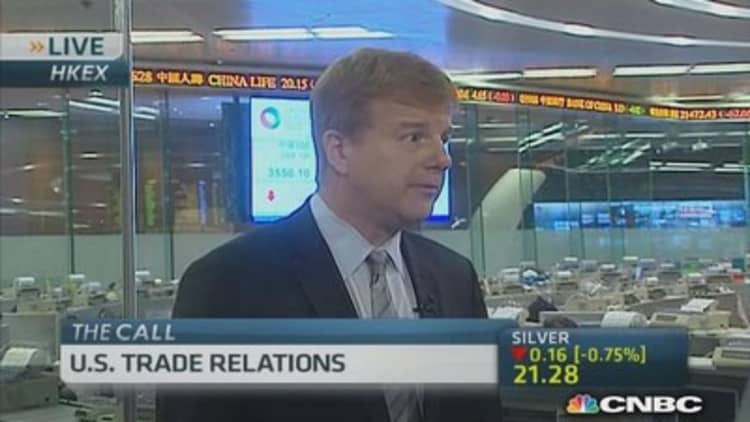The prospect of the U.S. harnessing its soaring natural gas reserves to stay Russia's heavy hand in Ukraine may be far easier said than done.
In the days after Ukraine's political turmoil and Russia's subsequent incursion into Crimea, a groundswell of support has emerged for the U.S.—which is expected to churn out 2 trillion cubic feet of natural gas this year—to use its fuel bounty to counter Moscow's global influence. The thinking is that America's cheap natural gas could undercut Russia's exports of the liquid fuel to Ukraine and Western Europe.
However, some observers are deeply skeptical that American fuel supplies can have an immediate impact, if any at all, on events unfolding abroad.
Unlike in Russia or the petrostates of the Middle East, private companies own and supply U.S. natural gas. Accordingly, producers make decisions on where to ship fuel based on commercial needs such as supply, demand and price, rather than geopolitics.
"Essentially the U.S. government cannot force that upon private-sector companies," said Tim Boersma, a fellow at the Energy Security Initiative at the Brookings Institution. "There are rare examples of the government forbidding companies to sell a product somewhere, e.g., Iran, but to sell somewhere for arguably a lower price than the company could get elsewhere" is unrealistic, he added.
Meanwhile, five years into the U.S. energy revolution, the country's nat gas infrastructure remains underdeveloped, with barely 200 pipelines in operation. That pales in comparison with Russia's sprawling network—many of which run through Ukraine, and which supply a third of Continental Europe's natural gas.
(Read more: Russian energy a threat to Europe, but not the US)
There's an additional problem of scale. In 2012, Russia shipped nearly 200 billion cubic meters of natural gas abroad, according to the CIA's World Factbook, with Qatar coming in a distant second with 114 billion cubic meters. Those amounts eclipse the 46 billion cubic meters exported by the U.S. during the comparable time frame.
(Read more: Louisiana terminal gets OK to export natgas)
William Frohnhoefer, managing director of research firm BTIG, said in an interview that the U.S. doesn't need to supplant all of Russia's supply to European countries—but just enough to send Moscow a strong message.
"You don't need to replace it all, you need to show Russia [Ukraine] has alternatives," Frohnhoefer said.

The Russian economy is heavily reliant on gas revenue, which could help Europe reverse the power dynamic. "If Ukraine and other countries dependent on Russia can wean themselves away, they will be emboldened to seek other [nat gas] sources, and that would be the U.S.," he added.
Still, the U.S. has a queue of 20 companies waiting for the federal government to approve LNG export facilities. The Department of Energy has approved four new terminals in the past year, a pace some industry participants consider too slow.
The primary market for U.S. nat gas is made up of countries that have free trade agreements with the U.S.—something Ukraine and other European countries currently lack, although consulting firm Ernst & Young points out that the DOE has "greater latitude" in deciding whether to approve exports to non-free-trade countries.
As it stands, approximately 80 percent of the LNG exports coming online in the next few years are committed to Asia, currently the largest market for U.S. nat gas producers.
The stagnant Ukraine economy has made it hard pressed to pay back the whopping $2 billion it owes Gazprom, the natural gas giant that's controlled by Russia's government. It also makes it hard for U.S. companies to see the country as a worthwhile investment, noted Kartik Misra, senior analyst at Energy Intelligence.
(Read more: Booming US energy sector feeds manufacturing, may overtake it)
"The problem is Ukraine doesn't have the ability to pay for this gas," Misra said, adding that Kiev "has been historically bad about paying gas debts. Even if we could ship this gas to Ukraine, they don't have the ability to pay for it."
Most U.S. LNG exports won't come online until 2016 at the earliest, Misra said, which is likely to be too late to resolve the Ukrainian crisis.
"The timing is instrumental in this argument," he said. "U.S. exports are not necessarily going to be helpful to Ukraine."
—By CNBC's Javier E. David. Follow him on Twitter @TeflonGeek.


